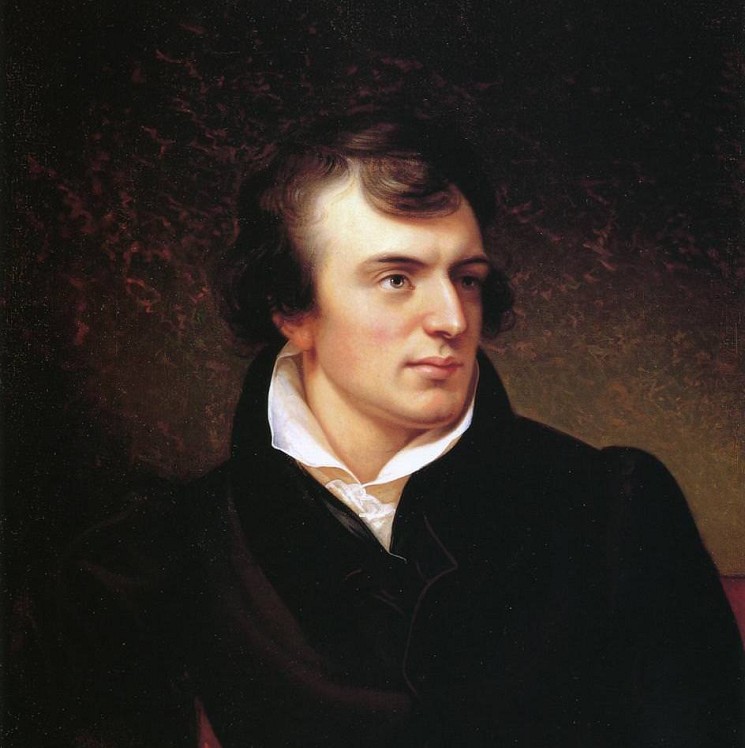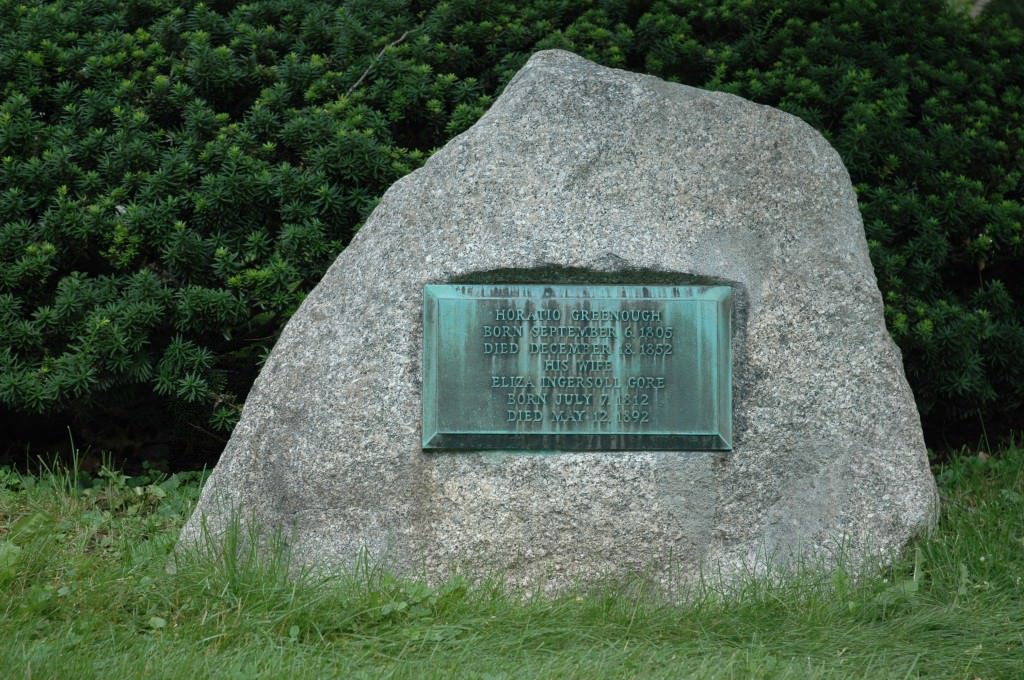Horatio Greenough (1805 – 1852)

A noted American sculptor, Horatio Greenough was born on September 6, 1805 in Boston, Massachusetts.
One of eleven children1, Greenough was the son of David, a large-scale real estate developer, and Elizabeth, a published poet. At the age of 13, his proficiency in art (primarily sculpture) captivated influential Bostonians like Thomas Handasyd Perkins2(Lot #108, Central Avenue), William Shaw (director of the Boston Athenaeum), Solomon Willard (Boston architect), and Alpheus Cary (Lot #485, Willow Avenue). Greenough studied literature at Harvard in 1821 while continuing to cultivate his skills as a sculptor. The College granted him permission to leave prior to commencement to travel to Rome to study his craft.
Greenough met some of the most prominent artists of his time in Rome, including Danish sculptor Bertel Thorvaldsen; he later moved to Florence and joined a thriving community of European and American artists and writers. His career flourished in the 1830s as commissions grew for ‘ideal’ sculptures – those with subjects drawn from literature and mythology – and Greenough experienced popularity in the U.S. as his sculptures became the centerpiece of special exhibitions and were publicly displayed. This generated a slew of new commissions, including one from U.S. Congress for a statue of George Washington, to be placed in the U.S. Capitol. Greenough spent two years fervently working on his casting of George Washington, which he ultimately chose to depict as the Olympian Zeus. In 1837 he received another commission for a statue outside the Capitol; he began work on The Rescue, a piece commemorating the interactions between early Colonists and Native Americans.
While abroad, Greenough met Eliza Gore, who was taking the Grand Tour in 1837. The couple was married later that year. The daughter of successful Boston merchant John Gore, Eliza had a large inheritance that afforded the Greenoughs a comfortable lifestyle, and this financial stability allowed Greenough to be more selective with his commissions.
The 1841 exhibition of George Washington was met with mixed public opinion: many disagreed with Greenough’s decision to portray Washington bare-chested instead of clothing him in contemporary dress. Greenough responded through a series of essays on art that explained his aesthetic choices and critiqued the tastes of the American public; they were later compiled into the book Form and Function: Remarks on Art, Design, and Architecture (1947). Although Greenough’s ideas were not widely embraced at the time, his belief that form was secondary to function in design was embraced by the Modernist movement in the twentieth century.
As Greenough’s popularity grew, his personal life suffered. The couple’s lavish spending quickly whittled away at Louisa’s inheritance, and her health declined. They moved back to Boston in an attempt to piece their lives back together, but after selling Louisa’s family home, Gore Place, they returned to Europe. In 1845 they had a son, Henry Saltonstall Greenough, during political turmoil in Northern Italy. Fearing for the safety of their family, the Greenoughs returned to America in 1851 following the completion of The Rescue.
After a bout of ‘highly irrational behavior,’ Greenough was admitted to the McLean Asylum the following year. On December 18, 1852, he died from ‘brain fever,’ and was buried in a lot purchased by his wife.
Horatio Greenough is buried at Lot 97, Central Avenue.
1Another gifted sculptor, Greenough’s younger brother, Richard Saltonstall Greenough, was commissioned by Mount Auburn to create a statue of John Winthrop (one of the founders of Massachusetts). Initially displayed in Story Chapel, the sculpture now housed in Annenberg Hall at Harvard. Read more in Kathleen Fox’s The Statues of Bigelow Chapel, available in the spring 1996 issue of Sweet Auburn.
2Perkins was captivated by Greenough’s Arno, a life-sized statue of the artist’s own greyhound, prompting him to commission Greenough to create a statue of a Newfoundland dog. The Perkins dog was placed in the family lot in 1844. Another Mount Auburn resident, Edward Everett, was so enamored of Arno that he took possession of the sculpture in 1852. The sculpture is currently on display at the Museum of Fine Arts, Boston.
Adapted from the research of Bree Harvey, as published in Mount Auburn’s September Birthday: Horatio Greenough, 2003.

Leave a Reply